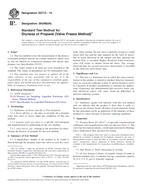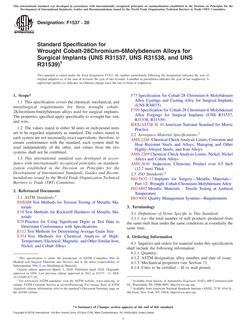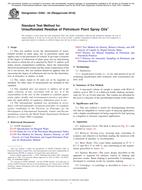1.1 This test method covers the measurement of the frictional properties of winter contaminated pavement surfaces using an averaging-type spot measuring decelerometer. The method produces a reading that is proportional to the deceleration sustained by a test vehicle fitted with pneumatic rubber tires braking with all wheels locked. A friction index for a section of winter contaminated pavement is determined from the average of several deceleration measurements recorded over the section of winter contaminated pavement.
1.2 This test method is applicable to averaging-type spot measuring decelerometers.
1.3 This test method is applicable to the following winter contaminated pavement surface conditions:
1.3.1 Ice;
1.3.2 Wet ice (ice covered with a thin film of moisture of a depth insufficient to cause hydroplaning);
1.3.3 Compacted snow, any depth;
1.3.4 Slush on ice, slush not exceeding 3 mm (0.1 in.) in depth;
1.3.5 Loose, dry snow, not exceeding 25 mm (1 in.) in depth;
1.3.6 Ice control chemical solution on ice; and
1.3.7 Sand on ice.
1.4 This test method shall not be used when the following winter contaminated pavement surface conditions are present:
1.4.1 Water on a bare pavement surface;
1.4.2 Slush; and
1.4.3 Loose snow exceeding 25 mm (1 in.) in depth.
1.5 The values stated in SI units are to be regarded as the standard. The values in parentheses are in inch-pound units and are not exact equivalents, therefore, each system must be used independent of the other, without combining values in any way.
1.6 This standard does not purport to address all of the safety concerns, if any, associated with its use. It is the responsibility of the user of this standard to establish appropriate safety and health practices and determine the applicability of regulatory limitations prior to use.
Product Details
- Published:
- 08/10/2000
- Number of Pages:
- 4
- File Size:
- 1 file , 62 KB


